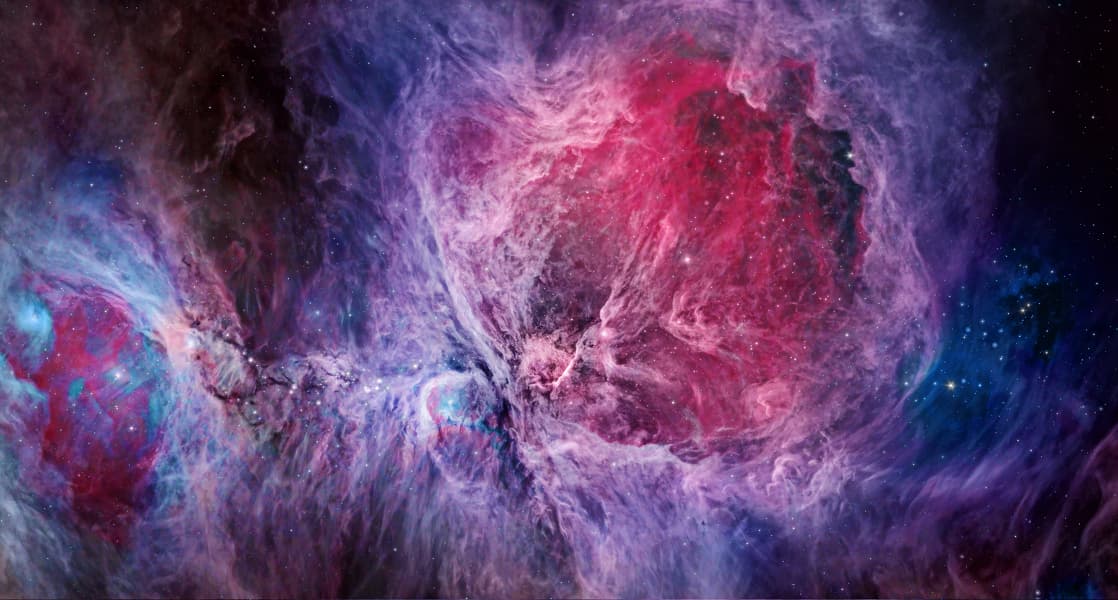
Infrared: NASA, Spitzer Space Telescope; Visible: Oliver Czernetz, Siding Spring Obs.
If you wonder where we came from and how we got here, there’s a step we are quite confident on. About 5 billions of years ago, before the Sun shone a single ray all the atoms you are made of were part of a large gas cloud like the one in the picture.
The object photographed is the Orion Nebula, which is probably one of the most famous and recognisable molecular clouds in the whole sky. This spectacular image is a composite of 7 colours: 3 visible and 4 infrared, from NASA’s Spitzer Space Telescope.
The image captures the heart and soul of the nebula itself. In exquisite clarity, you can see the long filaments of dust and gas as they are being shaped, stretched and squeezed by the power of the young stars. The main stars in question are part of the Trapezium, a stellar group of four young objects. With their energetic UV lights, these stars are pushing the gas and dust away, creating the filaments. The visible structures are actually shock fronts from the fast moving gas smashing into the slow moving gas.
The Orion Nebula is 40 light-years across and it is located in the same arm of the Milky Way as the Sun, at a distance of approximately 1,500 light years away. It might seem very dense but you wouldn’t see the cloud if you were inside it. Maybe even dust and gas are misnomers. The particles are less than 1 micron in diameter, so they are closer to a very light fog and we only see them as a single structure due to the amount of it.